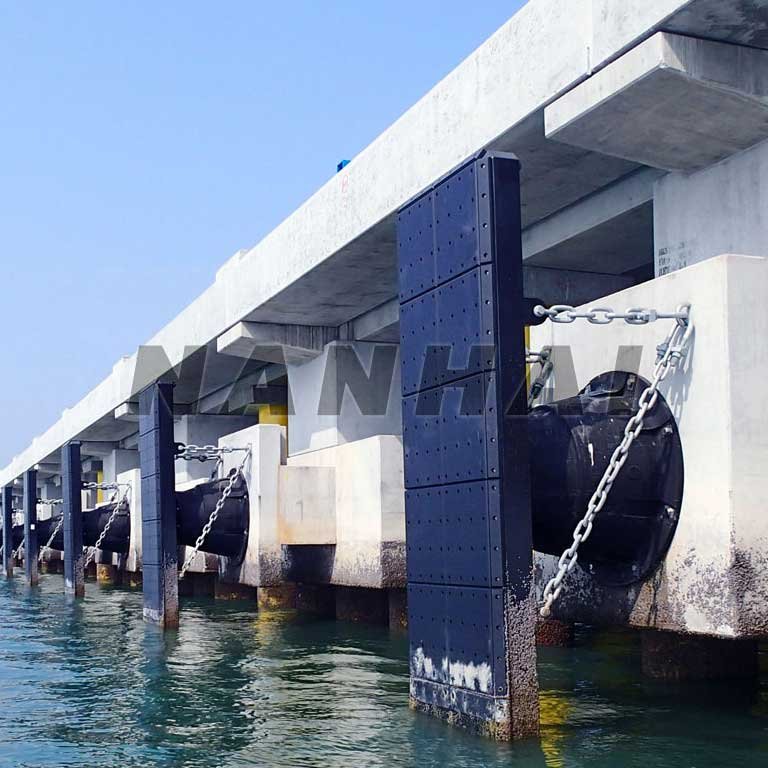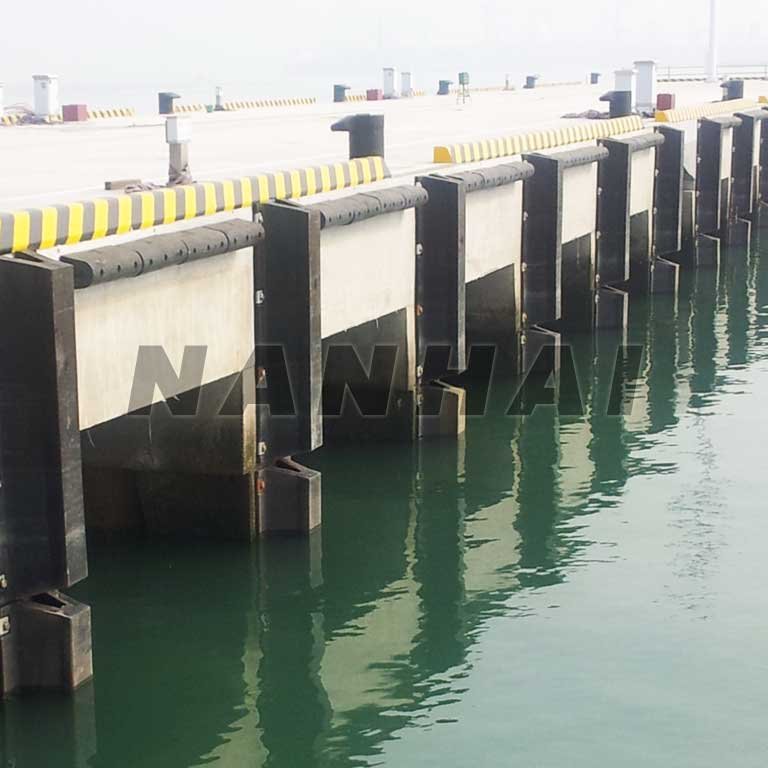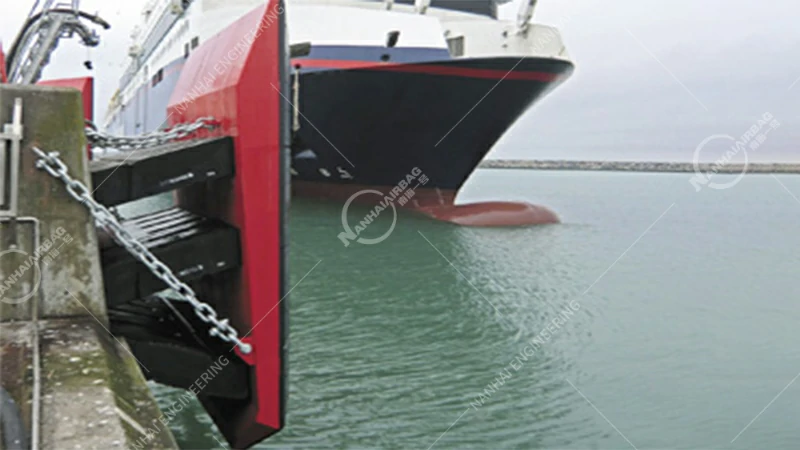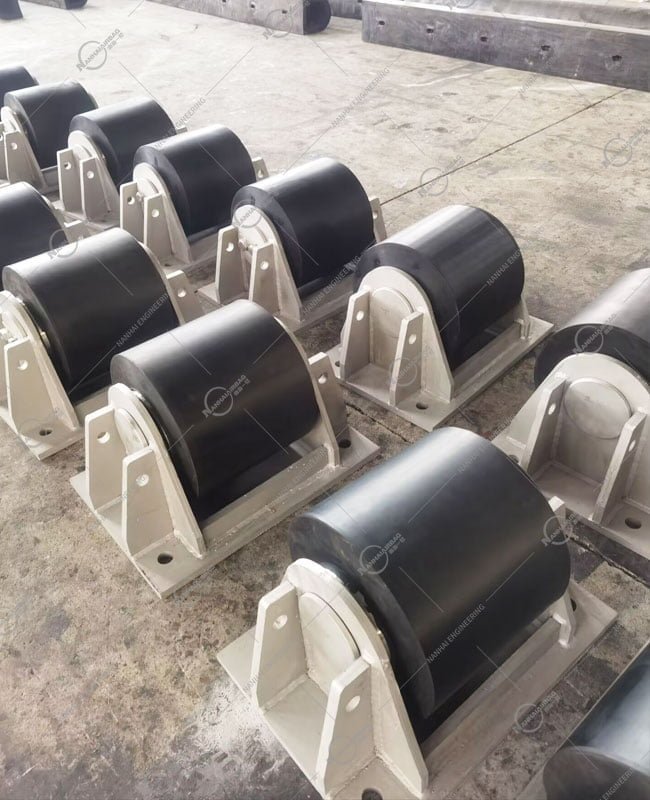ما هو الغرض من مصدات يوكوهاما؟
05/04/2025هل جميع مصدات القوارب قابلة للنفخ؟
05/05/2025ما هو الحاجز البحري؟
لماذا هذا الموضوع ضروري وعاجل؟
مع تزايد التجارة العالمية، تحتاج الموانئ والسفن إلى موثوقية أنظمة الرفارف لضمان عمليات آمنة. سواء كان مرسى صغير أو مركز شحن رئيسي، فإن المصدات البحرية المناسبة يمكن أن تعني الفرق بين الإبحار السلس والاصطدام الكارثي.
المقتطفات المميزة لجوجل: المصدات البحرية
تلعب المصدات البحرية دورًا حيويًا في منع التصادمات، ليس فقط بين السفن ولكن أيضًا بين السفن والأرصفة أو الموانئ. وعادةً ما يقوم المصنعون ببناء هذه المصدات من مواد مرنة مثل المطاط أو الرغوة، والتي تمتص طاقة الرسو الهائلة من خلال الضغط. وبالمقارنة مع الأرصفة غير المحمية، فإن تلك المزودة بمصدات تتعرض لصدمات أقل بكثير، مما يعني انخفاض تكاليف الصيانة وتقليل وقت التعطل.
يقوم العمال بتثبيت المصدات على هياكل السفن أو أقواسها لمنع الضرر أثناء عمليات النقل من سفينة إلى أخرى. غرضهم الرئيسي؟ لتجنب وقوع حوادث كبيرة في العمليات اليومية، والحد من الإصابات، وحماية البيئة البحرية.
حلول المصدات البحرية المخصصة
عند تصميم المصدات البحرية، يجب على المهندسين مراعاة عدة عوامل، مثل:
- حجم السفينة وطولها
- موقع المنفذ ونوعه
- عرض الممر المائي
- نطاق المد والجزر
- ظروف المياه القريبة
لحسن الحظ نانهاي توفر حلولاً مصممة خصيصاً لتلبية كل احتياجاتك الفريدة.
أنواع المصدات البحرية
تقدم نانهاي مجموعة واسعة من المصدات عالية الأداء، مما يضمن المتانة حتى في أقسى الظروف مع تقليل المخاطر التي تتعرض لها الموانئ والسفن.
المصدات الهوائية
تُستخدم المصدات الهوائية في المقام الأول في عمليات نقل البضائع من سفينة إلى أخرى، ولا تتطلب المصدات الهوائية سوى القليل من الصيانة. على سبيل المثال، تحتاج المصدات الهوائية من نانهاي إلى إعادة التعبئة كل ستة أشهر فقط وتفي معايير ISO 17357. بالإضافة إلى ذلك، يمكن لأطقم العمل تفريغ الهواء من الهواء وطيها لنقلها بتكلفة أقل. علاوة على ذلك، تعمل هذه المصدات بشكل جيد في الموانئ ذات التقلبات الكبيرة في المد والجزر لأنها تطفو مع مستويات المياه.

مصدات الرغوة
مصنوعة من ألواح إسفنج البولي إيثيلين فوم مع الهياكل ذات الخلايا المغلقة، تمنع المصدات الرغوية من Nanhai اختراق المياه. ونتيجة لذلكفهي تظل تعمل حتى في ظل الصدمات الشديدة دون أن تنفجر. ما هو أكثر من ذلك, a طلاء البوليوريا تعزز مقاومة التآكل والخدوش، مما يطيل من عمرها الافتراضي. أفضل ما في الأمر، يمكن للعملاء تخصيص السُمك واللون.

مصدات الدونات
يقوم العمال بتركيب هذه المصدات على أكوام فولاذية مغمورة، مما يسمح لها بالدوران والطفو مع المد والجزر. عادةً، يتم وضعها في زوايا الرصيف ومداخل القنوات الضيقة لمساعدة السفن على الدوران بأمان زائدتعمل ألوانها الزاهية كمرشد بصري.

مصدات الخلايا الفائقة
أحد أقدم التصاميم وأكثرها موثوقية, مصدات الخلايا الفائقة لا تزال تحظى بشعبية لأن فهي سهلة التركيب، وبسيطة في التركيب، وقليلة الصيانة، وقوية. في الوقت الحالي، عروض نانهاي المقاسات القياسية (500 مم - 3000 مم) والمقاسات المخصصة.

سوبر المصدات المخروطية
وبفضل شكلها المخروطي، تتفوق هذه المصدات في الموانئ ذات التحولات المدية الشديدة، مما يوفر أعلى مستوى مقاومة القص والضغط. في الواقعنانهاي سوبر مخروط المصدات (ترقية من تصاميم عمرها 25 عامًا) تدعم الألواح الأكبر حجمًا مع عدم فقدان الأداء عند انحراف 10 درجات تقريبًا.

سوبر مصدات مطاطية مقوسة
مصدات مقوسة مستقرة ومنخفضة الصيانة، تتعامل مع المصدات المقوسة بيئات الضغط العالي بشكل جيد، خاصة بالنسبة للسفن متوسطة الحجم. في كثير من الأحيان،تقوم الطواقم بإقرانهم مع مصدات أسطوانية لمزيد من الحماية.

مصدات مطاطية أسطوانية
باعتبارها أكثر الرفارف الأسطوانية شيوعًا في جميع أنحاء العالم، تبرز الرفارف الأسطوانية لأن هم سهلة التركيب، وبأسعار معقولة، وقابلة للتكيف. ستجدهم في:
- أرصفة البضائع السائبة
- أرصفة البضائع العامة
- محطات الرورو ومحطات العبارات
- مراسي الصيد ومراكب الصيد وقوارب العمل
- الهياكل العائمة وملاذات السحب العائمة

المصدات المطاطية للعنصر
تتميز هذه الرفارف بما يلي أرجل مطاطية مسبقة التشكيل مدمجة في الألواح، وتمتص الطاقة العالية مع تقليل الرفسات إلى الحد الأدنى. في الوقت الحالي، توريدات نانهاي مقاسات 300 مم - 1600 مم (بما في ذلك التصميمات المخصصة)، مما يجعلها مثالية للمساحات الضيقة.

المصدات المطاطية المركبة
عن طريق المزج مرونة المطاط مع احتكاك UHMW-PE المنخفض ومتانته، تستخدم هذه المصدات الفلكنة الخاصة من أجل رابطة أقوى. تشمل الاستخدامات الشائعة ما يلي:
- الأحواض وزوارق القطر
- حماية الجسر
- الممرات المائية الداخلية
- منصات الهبوط
- مراسي السفن الصغيرة

المصدات المطاطية المبثوقة
- النوع D: على شكل D مع فتحة مركزية على شكل D (DD) أو مستديرة (DO) - يقوم العمال بتثبيتها مباشرةً على الأرصفة، حتى على المنحنيات.
- نوع المربع: مربع الشكل مع فتحة مركزية D (SD) أو مستديرة (SO). متوفر باللون الأسود/الرمادي الداكن (ألوان مخصصة)كما أنها تأتي مع ألواح UHMW-PE.

مصدات زورق القطر
تعتمد القاطرات على المصدات الأسطوانية كـ مخازن مؤقتة القوس/المؤخرة. نظراً لشكلها المستديرفهي تعمل بشكل جيد مع الأقواس الكبيرة وجوانب السفينة. و، تقدم نانهاي أطوالاً مخصصة.

المصدات الدوارة
في الغالب، تقوم أطقم العمل بتركيبها في الأماكن الضيقة مثل جدران الحوض الجاف لتوجيه السفن بسلاسة. بدلاً من ذلك، يتم استخدامها في الزوايا وأقفال المداخل حيث يكون امتصاص الطاقة المنخفضة هو المفتاح. منذ يستخدمون الفولاذ المقاوم للصدأ والمحامل المركبةفهي بالكاد تحتاج إلى صيانة. زائد، يمكن تكديسها.

توفر نانهاي مصدات بحرية عالية الأداء لكل السيناريوهات، مما يضمن السلامة والمتانة والكفاءة في العمليات البحرية العالمية.
يسأل الناس أيضًا
- ما هي المواد المصنوعة منها المصدات البحرية؟
تشمل المواد الشائعة المطاط الطبيعي، والمطاط الصناعي (EPDM، SBR)، والرغوة (البولي إيثيلين والبولي يوريثان)، والمواد المركبة مثل UHMWPE لمقاومة التآكل. - ما الفرق بين المصدات الخلوية والمصدات المخروطية؟
توفر المصدات الخلوية ضغطاً منتظماً للحماية الشاملة، بينما توفر المصدات المخروطية مقاومة قص أعلى - مثالية لمناطق المد والجزر أو الصدمات المائلة. - ما هي معايير ISO للمصدات الهوائية؟
تشمل المعايير الرئيسية ISO 17357. - ما المصدات التي تعمل بشكل أفضل لمحطات السفن السياحية؟
يُفضل استخدام المصدات الأسطوانية أو الهوائية الكبيرة لامتصاصها العالي للطاقة وملامستها الناعمة للبدن لمنع حدوث أضرار تجميلية.
